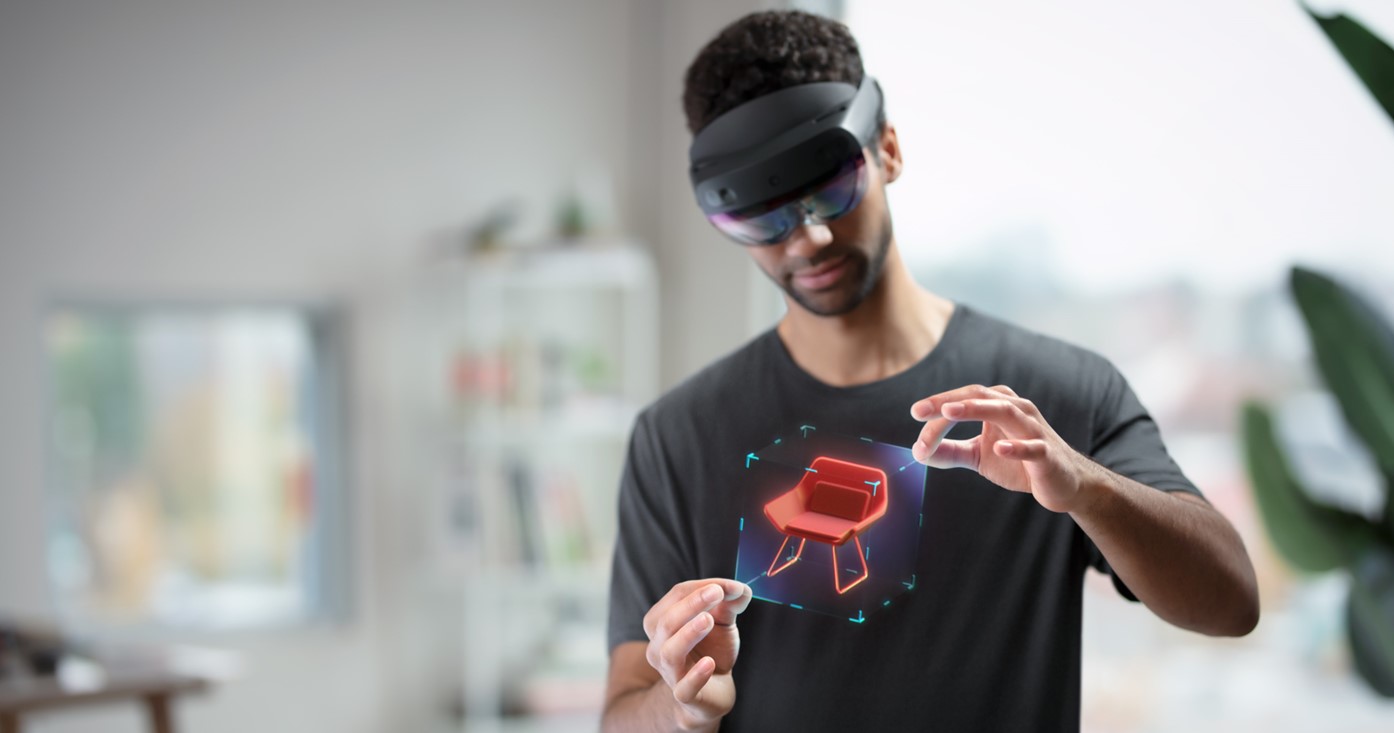Extended Perception Layer – Investigating a Holistic Digital Environment
Brief Description
Project Duration: Since May 2022
Immersive technologies such as augmented reality (AR) or mixed reality (MR) offer the unique ability to superimpose virtual objects over the real environment. This provides various possibilities for interaction. While certain devices only allow us to see these virtual objects, other devices are designed to enable an interaction between the virtual objects and the natural environment. In this way, AR applications enable significant advances in the daily lives of individuals. For example, a digital replica of the desired furniture can be placed in the living room. In addition, collaborative activities can be seen with gaming experiences such as Pokemon Go, leading to community events to catch virtual goods. Furthermore, companies use AR to promote their products to a broader audience.
As can be seen, AR is already present in various areas of our daily lives and is changing the way we interact with others and the environment. Although these applications help us with specific decision-making scenarios, establishing contact with other people, or increasing efficiency, the impact on human behavior still lacks research. Further, it remains unclear how a ubiquitous digital layer will influence the way we communicate and act in future socio-technological information systems.
This research project aims to contribute to the question of how AR technology affects the way we perceive, communicate, and interact with the digitally enhanced environment. Therefore, we incorporate individual, interpersonal, organizational, and societal perspectives for investigation in a holistic approach defining a digital layer that extends the human perception of the real world.
Ansprechperson: Christian Murlowski

Published Work
Extended Perception Layer – Investigating a Holistic Digital Environment
Murlowski, C. (2024)
This doctoral consortium proposal outlines the research project titled "Extended Perception Layer (XPL) – Investigating a Holistic Digital Environment." The study addresses the emerging need to integrate Augmented Reality (AR) within the broader context of the Metaverse. As digital and physical worlds increasingly intersect, this research aims to conceptualize a comprehensive AR framework that enhances user interaction across private, shared, and public layers. Grounded in the level of analysis theory, the project seeks to explore the societal and individual impacts of a pervasive digital layer overlaying the physical environment. Preliminary work includes conceptualizing XPL and investigating user concerns related to everyday AR use. Key research questions focus on identifying components of a holistic digital layer, understanding user behavior in various contexts, and designing effective virtual objects. The project involves mixed-method studies to explore immersive environments' effects on well-being, social presence, and personal space in collaborative settings. Additionally, design principles will be developed to mitigate visual clutter and ensure safe AR interactions. This research contributes to the theoretical foundation and practical implementation of AR in enhancing human perception and interaction within the Metaverse, aiming for a seamless digital-physical integration.
Investigating the Everyday Use of Individuals with Augmented Reality
Murlowski, C., Bach, M., Morana, S. (2024)
Augmented reality (AR) is a promising ubiquitous technology that can be used in everyday life. However, there is limited research on the use of AR in individuals' everyday lives. This research aims to gain insights into the concerns and requirements of prospective users and the potential of the technology. A two-fold process was followed, in which we first conducted a structured literature review to examine the relevant literature in the field of AR, everyday use, and user needs. Subsequently, semi-structured interviews were conducted with students as potential users to gain further qualitative insights. We found both benefits (e.g., better visualization, simplification of tasks, retrieval of information) and drawbacks (e.g., distraction from visualizations merging with the real world or less social interaction) in the daily use of AR devices. Further research should address these findings and what constraints should be considered when developing applications for a holistic digital world.
Published Work
Towards an Extended Perception Layer in Augmented Reality
Murlowski, Morana (2022)
Augmented reality devices overlay digital content above our visually perceived real world and enable new ways of collaboration, communication, interaction, and perception. Extant research explores the conceptual foundations, technical prerequisites, and actual implementation of augmented reality in various domains. We lack a concept explaining the comprehensive range of digital layers in a holistic extended reality environment to understand how, when, and why users, for example, want to access or share information. This paper presents the extended perception layer (XPL) concept serving as the groundwork for users' interaction with augmented reality. The XPL concept describes the differentiation of three digital layers and suggests how accessing information, sharing content, and interacting with each other can be done within the layers. We contribute with the XPL concept and a corresponding research agenda to further explore the possibilities of augmenting users' visual perception.
